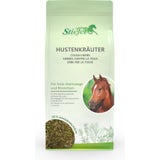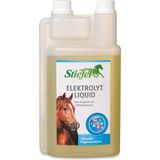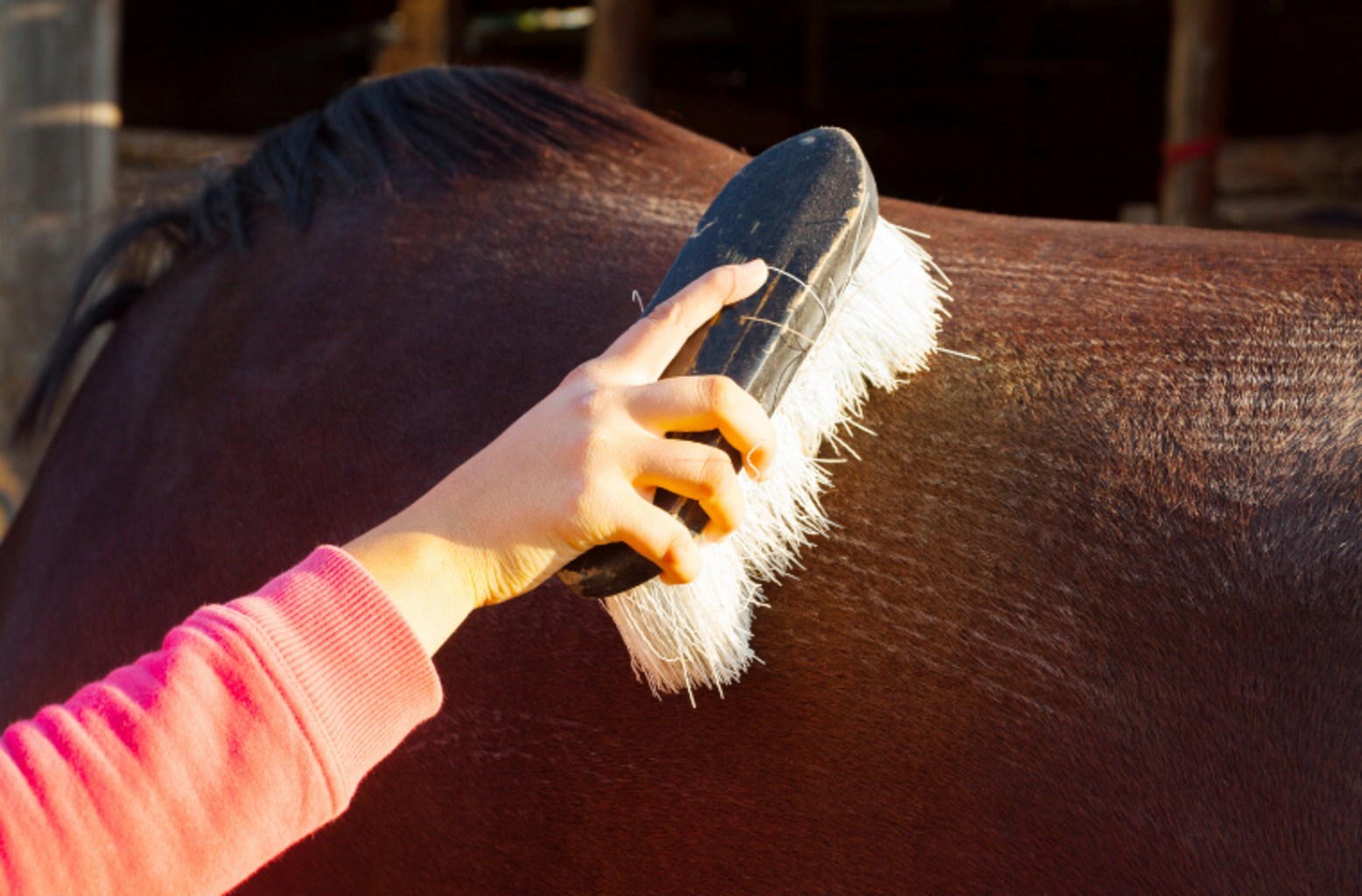Time for a Change of Coat
It's that time again, coat change!
Sometimes you can hardly believe it, but the coat change has started again. Some horses start changing as early as the end of August. The summer days usually do not let you waste thoughts on the cold, frosty winter days. But even if temperatures that are sometimes pleasant to hot are reached during the day, the temperature now drops significantly overnight. If you step outside again in the evening or at night, you will quickly notice that the temperatures cool down significantly overnight. These temperature fluctuations are a reason for some horses to slowly start changing their coat.
There is not ONE time for the coat change, because when it starts depends on the horse and the external circumstances. Some horses are more sensitive and freeze faster. Others may be put in a thickly littered box at night and are less likely to freeze. Still, other horses are more robust and enjoy the night cooling off.
In addition, the weather conditions are not the same every year: One year we sit with a T-shirt and shorts at the barbecue in the evening and the next year the temperatures are so low that a jacket or a thick sweater is more comfortable. In this case, the animals are no different. They adapt their coat to the prevailing temperatures.
Sunlight is also an important influencing factor for the beginning of the coat change. If the days get shorter and darker, the coat change starts faster.
How do I know if my horse is changing coat?
One of the first signs of the change of coat from summer to winter coat is the shedding of the fine, thin summer coat. While cleaning, hair flies around and the first tufts of fur get stuck in the brush. The horses often find cleaning and caring for their fur particularly pleasant at this time and like to be cleaned extensively, as the fur begins to itch. The four-legged friends are often happy when we make it easier for them to throw off their fur; the summer fur should go down to make room for the thick, dense winter fur. The horse's coat looks duller than usual, sometimes it becomes lighter at the ends of the hair. These are also the first signs of the onset of the coat change.
If you run into the stable early in the morning, you can see that the horses hair stands up on cold nights in order to be able to store heat between their hair. The horses have goosebumps. Again a sign that the coat change is imminent or has already started.
What actually happens when the horse changes coat?
Outwardly visible, the coat change actually seems to be quite easy. But the change of coat, especially the change from summer to a winter coat, is a great burden for the organism. Many remodelling processes start in the horse's body, which cost a lot of energy and nutrients. This increases the need for energy and nutrients during the change of coat. In short: we only see the tip of the iceberg. Because there is much more going on in the horse's body than just "shedding" the old summer fur. The change of coat can even take up to 4 months in some horses. Horses have up to 800 hairs per square centimetre of skin. So they can build up a really thick and, above all, dense coat to protectthemselves from low temperatures and external environmental influences such as rain or snow.
How can I help my horse change coat?
The horse actually knows instinctively what is good for them and what helps. In the wild, you could see that the horses mainly eat birch leaves and nettles as well as thistles during their kilometre-long forays across the fields and meadows, especially at the time of their coat change.
The change of coat is very stressful for the metabolism, but especially for the kidneys. The diuretic plants can support the kidneys during this stressful time and thus facilitate the change of coat.
Since hardly any herbs grow in our meadows or have already been eaten by the time the coat changes, the horses cannot take up the diuretic plants on their own. It, therefore, makes sense to feed the animal with diuretic herbs while it is changing its coat.
Nettles are particularly suitable. If you want to give the kidney more support during the change of coat, the Stiefel Kidney Herbs are also suitable, because the herbal mixture contains a selection of herbs such as birch leaves, goldenrod and field horsetail, which have valuable substances to support kidney function.
At the time of the coat change, the daily energy requirement of the horse is increased, so that rose hips and/or hemp oil can be fed as a supplement.
Rosehips provide high-quality fatty acids and the high content of vitamin C can additionally strengthen the immune system. Hemp oil is a valuable source of all essential omega-3, omega-6 and omega-9 fatty acids. All fatty acids are in an optimal ratio for the horse to one another. The hemp oil can cover the horse's increased energy needs when changing coat and can also have a positive effect on skin and coat. A few millilitres (15 - 25ml) can have a positive effect on the horse's health.
The production of new winter fur also increases the need for nutrients. Especially zinc and sulfur are particularly needed. Zinc is involved in many processes in the horse's body. When it comes to changing fur, it plays an important role in cell division and the growth of hair and hair roots. Zinc is also involved in the production of keratin. Keratin is the main component of the fur. So the horse needs zinc for a smooth build-up of healthy, new winter coat.
The horse can best metabolize zinc in the form of zinc chelate. Zinc chelate is an organic form of zinc. It has the highest bioavailability with up to 90%. The horse's organism can "absorb and metabolise" zinc chelate best.
Zinc in the form of zinc oxide has the worst bioavailability with only 10 - 20%.
Zinc sulfate is around 40 - 60% bioavailability.
Zinc sulfate would be sufficient for a normal supply of zinc. However, if there is a zinc deficiency, zinc chelate makes more sense.

Concerns that the horse could get zinc poisoning from large amounts of zinc are unfounded, as even "large" amounts of zinc do not become toxic as quickly.
Stiefel Zink Plus has a high proportion of zinc chelate and can therefore help facilitate cell growth. The immune system also needs zinc for its function. The administration of Zink Plus from Stiefel can also strengthen the immune system.
Similar to zinc, the need for sulfur is also increased when changing fur. Sulfur helps with the regeneration of skin cells and is therefore also involved in the process of changing fur. Due to the easily usable sulfur compound, Stiefel MSM offers a good opportunity to support your horse during the change of coat.
A deficiency in zinc and/or sulfur can (during the change of coat) lead to a weak immune system and thus to an increased susceptibility to infection. This can partly explain the increased incidence of diseases at the time of the coat change.
In general, a vicious circle can arise when there is a lack of nutrients or energy. A horse that is taking in too few nutrients and/or too little energy cannot build up enough winter fur or the winter fur is of poor quality so that it cannot serve its purpose properly. The horse may start to feel cold and/or feel sick and uncomfortable. This can weaken the immune system and greatly increase the risk of contracting an infection. If the horse freezes, this can lead to tension. The horses often seem powerless and move with a stiff gait. The tension can increase the risk of injury (to tendons and ligaments).
From this list, it quickly becomes clear how important the function of a good winter coat and a strong immune system is for the health of horses.
A good mineral feed should of course always be fed, but especially when the coat is changed so that the mineral and trace elements are kept in balance. Organic Mineral from Stiefel is a good mineral feed. It is grain-free and an optimal addition to the daily basic feed ration.
Do problems also arise when I shear my horse?
Many horses are shorn these days. The owners then unfortunately often think that they are not exposed to the possible problems of changing fur. Unfortunately, this assumption is wrong. The horse still changes coat. Even a shorn horse still has to get rid of its summer coat and builds up a winter coat. The owner then shears off the new winter fur, but this was also "produced" by the horse beforehand. Possible defects such as a thin winter coat or dull hair are just not so easily noticeable because the hair is often clipped too short. However, the horses can have deficiencies in zinc and sulfur. The immune system can also be weakened, so that the horses may get sick more often and/or more quickly. Shearing a horse does not save you from the possible complications of changing coat. The shorn horses should also be carefully observed and individually supported!
Latest reviews
-
 4.9 (16)
4.9 (16)Stiefel Cough Herbs, 1 kg
Bestseller- 100% natural herbal mixture
- For clear airways and bronchial tubes
- Suitable for long-term use
£20.13 (£20.13 / kg)Delivery by December 16
-
 5.0 (6)
5.0 (6)Stiefel Liquid Electrolyte , 1 l
- Contains sodium, potassium, calcium and magnesium
- For compensation of electrolyte losses
- Dietetic feed for horses
£13.33 (£13.33 / l)Delivery by December 16
-
Great Britain: Free standard delivery from £79.90
-
Free
returns Secure payments
with SSL encryption technology

